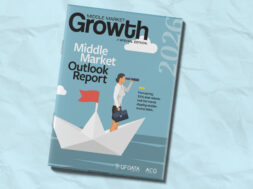Multiple Reasons Valuations Seem High
Middle-market deal-makers suspect purchase prices are higher than the data show, in large part because of the characteristics of the businesses they’re buying.

There’s no question that deal valuations are at a post-recession peak, yet many middle-market deal-makers suspect prices are even higher than the data suggest, in large part because of the characteristics of the businesses they’re buying, such as size and industry niche.
“Their view of the market may be more skewed than they realize by their own selectivity,” says Andrew T. Greenberg, CEO of GF Data, whose third-quarter report elicited responses from private equity principals who believed its stated valuations were too low.
“Often these concerns come from individuals who believe they’re expressing a general sense of the market, when in fact it’s a sense of the particular cut in which they operate,” he adds.
Greenberg identified five features that characterize the 30 deals that attracted valuation multiples above nine times EBITDA, roughly the average for deals between $100 million and $250 million in enterprise value, based on self-reported data from 200 private equity firms. The high-value deals made up about 18.5 percent of the total deals completed by firms in GF Data’s network in the second and third quarters of this year.
Deals that closed at higher-than-average valuations involve some combination of exceptional financial performance, relatively large businesses, strong industry niches, seamless transition of management and private equity ownership.

The A-Pluses
Unsurprisingly, the best-performing businesses attract higher valuation multiples. For the 30 deals with above-average valuations, the median EBITDA margin was 22 percent and median revenue growth was 14.4 percent—that vastly exceeds the 10 percent margin and revenue growth that characterize strong financial performance, according to GF Data’s definition.
Highly valued deals also include a management solution—either senior management that will remain with the company after closing, or a management team put in place by the buyer, as often happens with an add-on purchase for an existing portfolio company.
The amount a business is able to borrow is another key factor in the deal price, according to Greenberg. “To a great extent, this unprecedented sellers’ market involves equity values being driven by debt levels,” he says.
Nonbank lenders are more interested in providing debt support for larger deals, where the payoff is greater. Among the transactions GF Data analyzed, only 10 percent of completed deals with $10 million to $50 million of business value reached or exceeded the nine times EBITDA valuation multiple. For those between $100 million and $200 million, it was 54 percent.
“Often these concerns come from individuals who believe they’re expressing a general sense of the market, when in fact it’s a sense of the particular cut in which they operate.”
ANDREW T. GREENBERG
CEO, GF Data, and Senior Adviser, TM Capital
Industry niche plays a role, too. Only 13 percent of manufacturing deals fell within the highly valued category, whereas 23 percent of deals in a more prized subset—branded consumer products—attracted higher-than-average valuation multiples.
Finally, ownership matters. GF Data found that a business owned by a private equity firm or corporation will attract a higher valuation than a similar business held by an individual or family owner, all things being equal.
“The greater professionalization of the business, including financial controls, tends to outweigh the perception that the individually owned business has left more meat on the bone for a buyer,” Greenberg says.
Data Don’t Lie
The perception of deal multiples in the market is shaped by a variety of factors, from the types of businesses an individual private equity buyer is focused on, to preliminary estimates from lenders on the amount of debt they’re willing to provide. Plus, deal professionals prefer to broadcast their highly valued transactions, skewing the market perception toward higher multiples.
Despite protestations from deal-makers, Greenberg stands by the data and expects that middle-market investment banks are seeing similar numbers.
“For the vast majority of middle-market M&A firms, if you were to say, ‘What do you have in house, what are you working on?’ the valuations correspond to what we’re reporting,” he says. “The sense that a deal professional has of the market at any one time is based on a constellation of a lot of different things, not just completed deal pricing.”

Kathryn Mulligan is the associate editor of Middle Market Growth.


